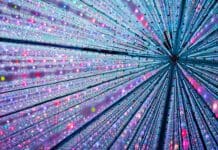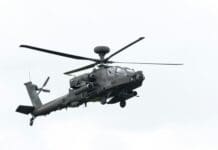This post is also available in:
 עברית (Hebrew)
עברית (Hebrew)
 Los Alamos National Laboratory researchers have successfully demonstrated for the first time that laser-generated neutrons can be enlisted as a useful tool in the war on terror.
Los Alamos National Laboratory researchers have successfully demonstrated for the first time that laser-generated neutrons can be enlisted as a useful tool in the war on terror.
According to HLS NewsWire the international research team in February used the short-pulse laser at Los Alamos’s TRIDENT facility to generate a neutron beam with novel characteristics that interrogated a closed container to confirm the presence and quantity of nuclear material inside. A Los Alamos Lab release reports that the successful experiment paves the way for creation of a table-top-sized or truck-mounted neutron generator that could be installed at strategic locations worldwide to thwart smugglers trafficking in nuclear materials.
The release notes that in the current experiments, the research team demonstrated that these laser-produced neutrons can be used to search for hidden nuclear material. Neutrons are a good choice as a probe because they can penetrate most materials very easily. If the neutrons encounter some nuclear material (like uranium or plutonium) they cause fission and more neutrons are released. Some of these released neutrons are produced over a period of seconds, which allows them to be measured after the initial neutron burst is finished. These “delayed neutrons” are a good measure of the presence of nuclear material because very few other materials produce them.
The scientists interrogated a closed container with nuclear material inside and an empty closed container and then compared the results. They found that the laser-driven-neutron-interrogation method not only confirmed the presence of nuclear material, but it told them the quantity as well.
i-HLS ISRAEL Homeland Security
“This is something that has never been demonstrated before,” Favalli said. “Up until this experiment, nuclear material detection with a single laser-generated neutron pulse was merely an idea. Our team invented the concept, fabricated all the materials necessary for the experiment, and confirmed our results within three weeks from start to finish. This is a little bit like the original days at Los Alamos National Laboratory. It is very exciting!”
Detecting and interdicting clandestine nuclear material using active interrogation has been somewhat impractical up until now because doing so would require a giant, stationary facility or long measurement times with less powerful neutron generators. The TRIDENT experiment shows promise for the development of a small, portable neutron interrogator that could be used at border crossings or elsewhere. Neutron interrogation can also be used in other applications such as materials science or the biological sciences, and the use of lasers could make the technique practical in other laboratories and universities.


























